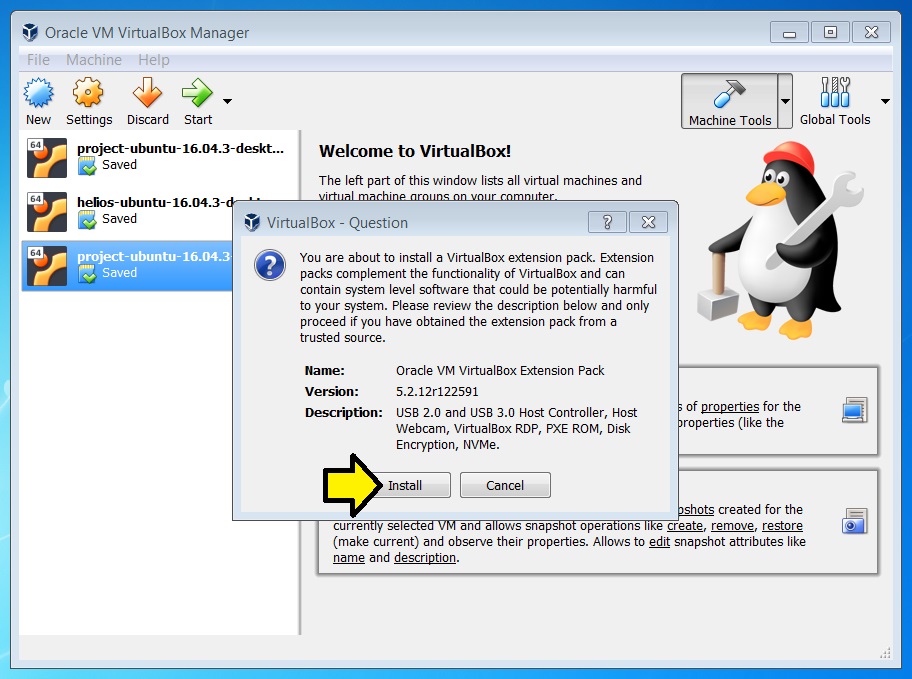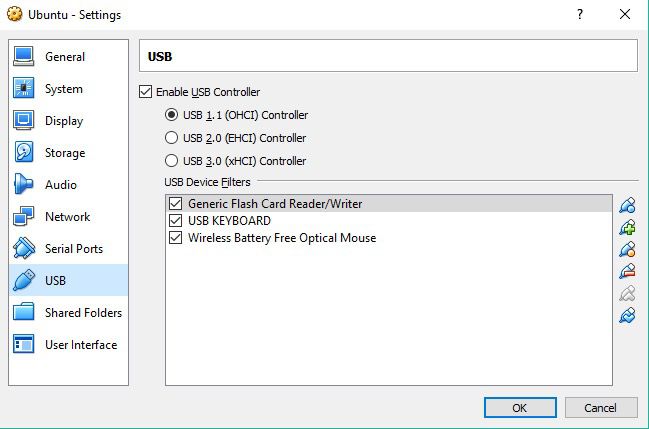

- #VIRTUALBOX EXTENSION PACK 4.1 2 MAC OS#
- #VIRTUALBOX EXTENSION PACK 4.1 2 INSTALL#
- #VIRTUALBOX EXTENSION PACK 4.1 2 UPDATE#
- #VIRTUALBOX EXTENSION PACK 4.1 2 FREE#
To start the virtual machine on the server, type: vboxmanage startvm / Once the VM has been copied to the server, it can be imported again with the command: vboxmanage import my-vm.ova Of course, the configuration for, say, the network has to be adjusted to match the host later on, but you can then easily export the VM and its virtual hard disk in the main menu ( File | Export ApplianceĮxtension, the configuration file and virtual disk will be exported to their own files. For more information, check out Chapter 8 of the VirtualBox online help.Īnyone who finds this process cumbersome can simply use a same-version VirtualBox installed on the desktop (independent of operating system) and point and click to create the VMs for the server. You just need a few of them to start creating, cloning, deleting, and modifying virtual machines. Parameter set, you are treated to no fewer than 448 lines of commands and parameters. VirtualBox should now be running on your server.īecause the Linux server doesn’t have a graphical user interface, controls are restricted to the command line. For my server, the procedure is shown in Listing 1.
#VIRTUALBOX EXTENSION PACK 4.1 2 INSTALL#
Then download and install the Extension Pack. To be on the safe side, you will want to enter vboxmanage -v
#VIRTUALBOX EXTENSION PACK 4.1 2 UPDATE#
Now, update the package list and install the current 4.1 version of VirtualBox: apt-get update & apt-get install virtualbox-4.1įor VRDP support, you still need the matching Extension Pack for your VirtualBox version.

The quickest way to install is to add the VirtualBox package source to your sources.listįile sudo sh -c 'echo "# VirtualBox repository Ubuntu 10.04 LTS Lucid \Īnd then add the GPG key to your keychain: sudo apt-key adv -recv-keys -keyserver 98AB5139 The host needs to be running a 64-bit kernel to create 64-bit VMs. I installed VirtualBox on an Ubuntu LTS 10.04.4 (Lucid Lynx) server, 64-bit version. VMs launched in this way automatically have VRDP support, so that network access to the system running on the virtual machine is possible with an RDP client.
#VIRTUALBOX EXTENSION PACK 4.1 2 FREE#
The Extension Pack is still available free of charge.įor operations on devices without a graphical user interface, VirtualBox can launch virtual machines in Headless Mode. Non-free here means Oracle has not released the source code. The non-free components, such as support for USB 2.0 devices, the VRDP server, and PXE boot for Intel network cards, were outsourced into the Extension Pack. For Linux users, Oracle continues to provide repositories for various Linux distributions. As of version 4.0, Oracle has now merged these two versions in a binary, which you can download from the VirtualBox website. The OSE often was available in the various Linux distro repositories, so users could easily install via their package repositories. Up to version 4.0 of VirtualBox, both a commercial and an open source edition (OSE) existed. In the VirtualBox Remote Desktop Protocol (VRDP, Figure 1), VirtualBox also has a built-in graphical interface to all the virtual machines: an RDP client is sufficient to access the VMs on the network regardless of the guest operating system.įigure 1: Thanks to VRDP support, you can access the virtual machine consoles in your browser with phpVirtualBox. VirtualBox does not place heavy demands on the hardware it does not require Intel VTX/AMD-V or a special Linux kernel, although it still offers great performance, thanks to its own guest extensions. Installing VirtualBox is easy on any platform because it usually only involves running a setup program or installing a package on the system.

#VIRTUALBOX EXTENSION PACK 4.1 2 MAC OS#
For example, the program is available free for the major platforms (e.g., Windows, Linux, Mac OS X, and Solaris), and it supports a wide number of guest systems, including exotics such as DOS/WIN 3.1 and OS/2. VirtualBox offers a number of advantages compared with other virtualization solutions. With the tools presented in this article, users can control VirtualBox VMs on the server remotely and conveniently. Although a command-line option is available, it offers very few of the comforts to which you’ve become accustomed. Management of virtual machines is via a GUI that only works locally and cannot be used on the network. Oracle’s free VirtualBox virtualization solution is intended for use on the desktop.


 0 kommentar(er)
0 kommentar(er)
